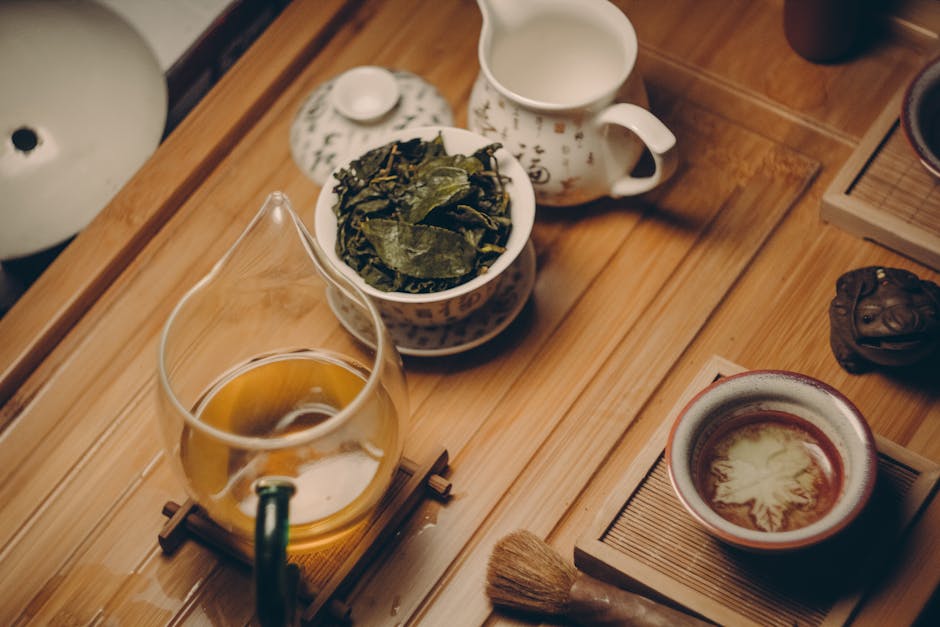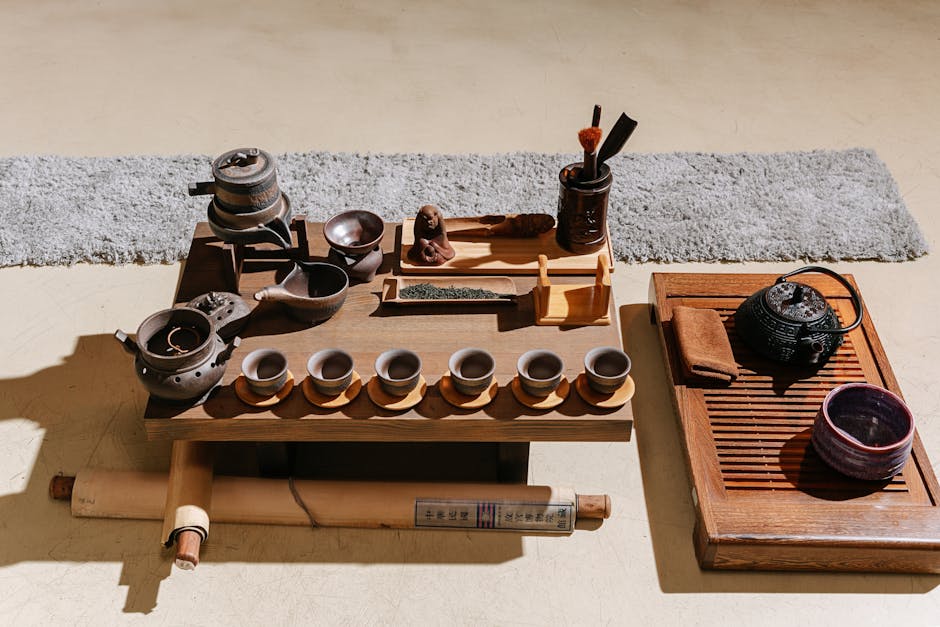Japanese Hojicha: The Roasted Tea Revolutionizing Global Palates in 2025
Hojicha: More Than Just a Tea, It's a Global Phenomenon
In the ever-evolving world of tea, a new star is rising, captivating palates and wellness enthusiasts alike: Hojicha. This roasted Japanese green tea, once a local secret, is now experiencing a global surge in popularity, poised to dominate tea trends in 2025. But what exactly is Hojicha, and why is everyone so obsessed?
Hojicha distinguishes itself from other Japanese green teas through its unique roasting process. Unlike Sencha or Matcha, which are steamed, Hojicha leaves are roasted over charcoal, typically at a high temperature. This roasting process dramatically alters the tea's flavor profile, transforming it from grassy and vegetal to nutty, toasty, and subtly sweet. The result is a tea that is incredibly smooth, easy to drink, and naturally low in caffeine, making it a perfect choice for any time of day.
The appeal of Hojicha extends beyond its flavor. Its low caffeine content makes it an attractive alternative to coffee or other caffeinated teas, especially for those sensitive to stimulants. Furthermore, Hojicha is rich in antioxidants and boasts a range of potential health benefits, contributing to its growing popularity among health-conscious consumers.

The History and Origins of Hojicha
The story of Hojicha begins in Kyoto, Japan, in the 1920s. Legend has it that a tea merchant, seeking to salvage leftover tea leaves and stems, decided to roast them over charcoal. The result was a surprisingly delicious and aromatic tea that quickly gained popularity among locals. This innovative approach not only reduced waste but also created a unique tea with a distinct flavor profile.
Traditionally, Hojicha was considered a more affordable and accessible tea, often enjoyed by families and served in restaurants. However, its appeal has transcended its humble beginnings. Today, Hojicha is celebrated for its unique flavor and health benefits, finding its way into high-end tea shops, cafes, and even Michelin-starred restaurants around the world.
The roasting process not only transforms the flavor but also reduces the tea's caffeine content. This made it a popular choice for children, the elderly, and those sensitive to caffeine, further contributing to its widespread consumption in Japan.

Hojicha's Unique Flavor Profile: A Sensory Delight
The defining characteristic of Hojicha is its distinctive roasted flavor. The roasting process imparts a warm, nutty, and slightly smoky aroma, reminiscent of toasted nuts or caramel. This contrasts sharply with the grassy and vegetal notes often associated with other green teas.
On the palate, Hojicha is smooth, mellow, and subtly sweet, with a lingering toasty finish. The absence of bitterness, often found in other green teas, makes it incredibly easy to drink and enjoyable for a wide range of palates. The flavor profile can vary depending on the roasting level and the type of tea leaves used, offering a diverse range of Hojicha experiences.
The versatility of Hojicha's flavor profile makes it an excellent ingredient in various culinary applications. From Hojicha lattes and ice cream to savory dishes and desserts, its unique taste adds a delightful twist to both traditional and modern recipes.

Health Benefits of Hojicha: Wellness in a Cup
Beyond its delightful flavor, Hojicha offers a range of potential health benefits. Like other green teas, Hojicha is rich in antioxidants, particularly catechins, which are known for their ability to combat free radicals and protect against cellular damage. These antioxidants contribute to overall health and well-being, potentially reducing the risk of chronic diseases.
Hojicha's low caffeine content makes it a gentle and calming beverage, suitable for consumption throughout the day. Unlike coffee or other caffeinated teas, Hojicha is unlikely to cause jitters or sleep disturbances. This makes it an excellent choice for those seeking a relaxing and healthy beverage option.
While more research is needed to fully understand the health benefits of Hojicha, preliminary studies suggest that it may offer benefits such as improved cardiovascular health, reduced inflammation, and enhanced cognitive function. As awareness of these potential benefits grows, Hojicha is increasingly recognized as a healthy and delicious addition to a balanced lifestyle.

Hojicha in 2025: Trends and Innovations
In 2025, Hojicha is poised to become a mainstream tea option, driven by its unique flavor, health benefits, and versatility. We're already seeing innovative applications of Hojicha in various industries, from food and beverage to cosmetics and wellness products.
Here are some trends to watch for:
- Hojicha-infused foods and beverages: Expect to see more Hojicha lattes, ice cream, chocolates, and other culinary creations on menus and store shelves.
- Hojicha in skincare: The antioxidant properties of Hojicha are attracting attention from the skincare industry, with potential applications in anti-aging creams and serums.
- Hojicha-based wellness products: Look for Hojicha supplements and teas designed to promote relaxation, reduce stress, and improve overall well-being.
- Sustainable Hojicha sourcing: As demand for Hojicha grows, expect to see a greater emphasis on sustainable farming practices and ethical sourcing.
Companies like Ippodo Tea and Marukyu Koyamaen are leading the way in providing high-quality Hojicha to a global audience. These companies are committed to preserving the traditions of Japanese tea while embracing innovation and sustainability.

Brewing the Perfect Cup of Hojicha: A Simple Guide
Brewing Hojicha is a simple and straightforward process. Unlike some green teas that require precise water temperatures and brewing times, Hojicha is relatively forgiving, making it easy to achieve a delicious cup every time.
Here's a basic guide:
- Heat water: Bring fresh, filtered water to a boil. Allow it to cool slightly to around 175-185°F (80-85°C).
- Measure tea leaves: Use approximately 1-2 teaspoons of Hojicha leaves per cup (8 ounces) of water.
- Infuse: Pour the hot water over the tea leaves and let steep for 30 seconds to 1 minute.
- Strain and enjoy: Strain the tea leaves and enjoy your freshly brewed Hojicha.
Experiment with different brewing times and water temperatures to find your preferred flavor profile. You can also try adding milk, honey, or other sweeteners to customize your Hojicha experience.

Where to Find Hojicha: Your Global Guide
As Hojicha's popularity continues to soar, it's becoming increasingly accessible around the world. You can find Hojicha in various forms, including loose leaf tea, tea bags, and powdered form, at specialty tea shops, online retailers, and even some supermarkets.
Here are some places to look for Hojicha:
- Specialty tea shops: These shops often carry a wide selection of high-quality Hojicha from reputable brands.
- Online retailers: Websites like Amazon, Amazon, and specialty tea retailers offer a convenient way to purchase Hojicha from the comfort of your home.
- Japanese grocery stores: Many Japanese grocery stores carry Hojicha, both in loose leaf and tea bag form.
- Cafes and restaurants: More and more cafes and restaurants are adding Hojicha lattes and other Hojicha-infused beverages to their menus.
Whether you're a seasoned tea connoisseur or a curious newcomer, Hojicha offers a unique and rewarding tea experience. With its delightful flavor, health benefits, and growing popularity, Hojicha is poised to become a staple in tea cups around the world in 2025 and beyond. So, embrace the roasted tea revolution and discover the magic of Hojicha!

So, embrace the warmth and unique flavor of hojicha – your taste buds (and well-being) will thank you!
-Hot Water
Comments
Post a Comment